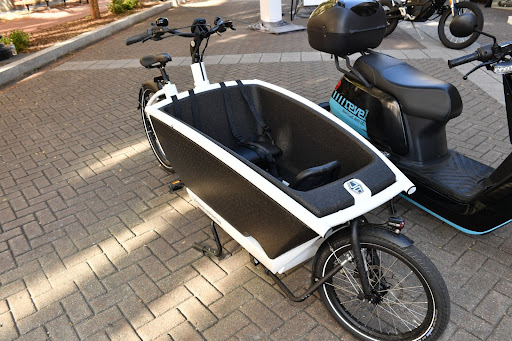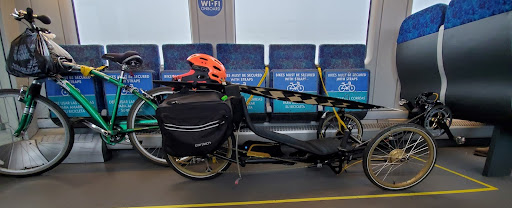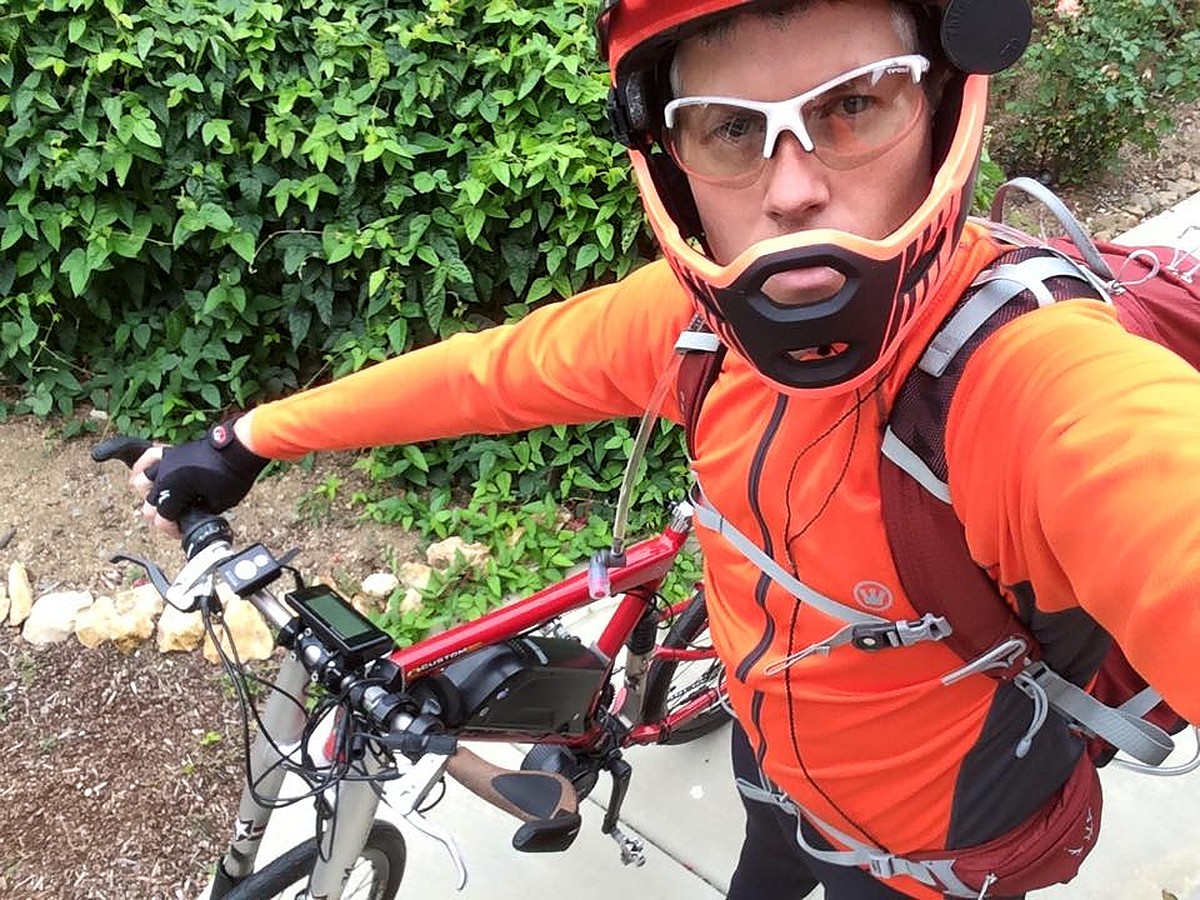On May 20, people across the country will dust off their forgotten two-wheeled steed, pump up the tires, poke around for some form of chain oil, and celebrate National Bike to Work Day. (You can check locally to see if your community gets involved on a different day.) At least that’s how the plan goes. In truth, for many, that plan is temporarily interrupted, when they realize it can take more than a few minutes of preparation.
My first try at Bike to Work Day didn’t work out as planned. At age 44, I was out of shape, and me and my aging secondhand 16-speed Trek road bike weren’t up to the task of a 38 mile round-trip commute that included some long climbs. I knew this because I tried it the weekend before, not wanting to fail and be late to work on the actual Bike to Work Day. My hopes were dashed, and I thereby designated April as National Prepare for Bike to Work Day Month.
The following year, I tried a different approach. It was 2015, and I had begun looking at the crop of e-bikes beginning to hit the market. They were interesting, but expensive. None of the models at local bike shops were inspiring me to take the plunge, and no one could accurately estimate their range, because much more so than with a car, your mileage may vary with an e-bike.
I immersed myself in online reviews and discovered the world of DIY e-bike building, taking an existing bike of your choice and grafting a motor and battery onto it. I found a well maintained, high-quality, 11-year-old mountain bike on eBay, and worked out a deal with a shop in Australia for an e-bike conversion kit. A few weeks, and some sweat equity later, I took the same Saturday ride towards work, unsure if I’d need to drive me and my bike halfway to work to pull this off. I was amazed to find that as long as I recharged at work, my new bike commute was not only possible, but fun! This allowed me to not only bike to work on the big day, but to also bike to work several days a week from then on. That’s the goal.
The e-bike has outsold electric cars in the US most years since 2012.
At a fraction of the price, e-bikes are a powerful way to slash greenhouse gas emissions while being far more accessible to most people than electric cars. In addition to being a cheaper purchase, they don’t require liability insurance, a driver’s license, a garage, a dedicated parking spot, or a multi-year loan and good credit. They enable cyclists of all levels to go faster and further than on a regular bike, and to improve their mental and physical health.
For many e-bike owners, the bike unlocks a whole new world by allowing them to leave the car at home or not own a car at all, and instead enjoy getting exercise in the open air and reclaiming that freedom you experienced as a child when you first learned how to ride.
In my role organizing with the Sierra Club, I advocate for ways to help address the climate crisis. What is critical when we talk about clean transportation is the immense role that bikes can and must play in the way we move about our neighborhoods. Electric or not, cars take up a lot of space. Swapping one gas-powered car for one electric car just perpetuates the automobile dependency so common in the US. The ultimate goal of transforming transportation in the US is to reduce the amount of cars on our roads in general, by tripling down on biking and public transit so people can get to where they have to go without ever having to drive.
To this end, the e-bike is a transformative climate solution!
Can’t make your daily commute even with an e-bike? You can explore pairing that bicycle with a dash of public transit. Buses, trains, and trolleys can help you go much further with your bike, and you’ve got a speedy, convenient last-mile solution available when you disembark to get you to your final destination. Research shows that bicycles cover up to five times more distance than walking in the same amount of time with the same amount of effort. And e-bikes just push the needle more.
Things have progressed a lot in recent years, and at every bike store e-bike choices are now readily available, including commuter bikes, mountain bikes, and if you look a little harder, even cargo bikes.

CTFA Director Katherine García's cargo bike at a Department of Transportation event in DC
In 2020, I was researching the most efficient types of cycles and read about recumbent bikes and trikes, which greatly reduce aerodynamic drag. I found an 18-year-old former Australian racing trike, fixed it up, bolted on a motor, and mounted an identical battery mount so I can move my single battery between it and my upright bike.

Riding on a recumbent trike combines the thrill of Mario Kart with the comfort of a La-Z-Boy recliner. You don’t even take your feet off the pedals when you stop. Buzzing mere inches off the ground at e-bike speeds might be the most fun you can have getting to work. This foray into three-wheeled cycling has introduced me to a whole community of aging folks and people living with disabilities whose mobility greatly benefits from the stability that a third wheel offers. Those who try e-assist on their trikes don’t look back, as it only improves the experience and extends their range of mobility.
I share a very hopeful vision with many urban planners that some day soon we might all ride on or in some form of highly efficient, lightweight, very low carbon impact vehicles. And I feel confident saying that Bike To Work Day, Bike Month, and getting out there and sharing our stories about biking as a form of transportation, while advocating for policies that make biking more accessible to more people, can inspire others to try the seemingly impossible.
Policies that make e-bikes cheaper help more people access them. To help people considering an e-bike, the Senate must pass the reconciliation bill it is now considering. The bill, which would create clean energy jobs and lower costs for families, would cut the cost of an electric bike by up to $900.
There’s so much that happens at the local level. Recently, volunteers at the Sierra Club San Diego chapter have started engaging in bike and transit advocacy, urging our city council to make it safer to walk and bike no matter your age or ability. This way, cycling will be a more attractive and safer option. We are also working with them on redesign to prepare our streets for expanded use of all types of wheels, including handcycles, wheelchairs, mobility scooters, e-scooters, velomobiles, and other forms of clean transportation we haven’t dreamed up yet.
Bike To Work Day has long been celebrated as a challenge and a rallying cry to try something different. I hope, if you’re not already participating in a mode shift for climate (changing your mode of transportation to lower emissions), that this time or maybe in preparation for the next one, you might make a plan for how you can bike to work more often and improve your health and heal the planet.
My own self-coined “Mode-Shift-4-Climate” obsession was born from a Bike To Work Day event, and now I’m midway through a project to build my own bamboo cargo e-bike. If it can inspire a formerly car-obsessed person like me to find a new love for bicycles, I know Bike To Work Day can inspire you, too.
